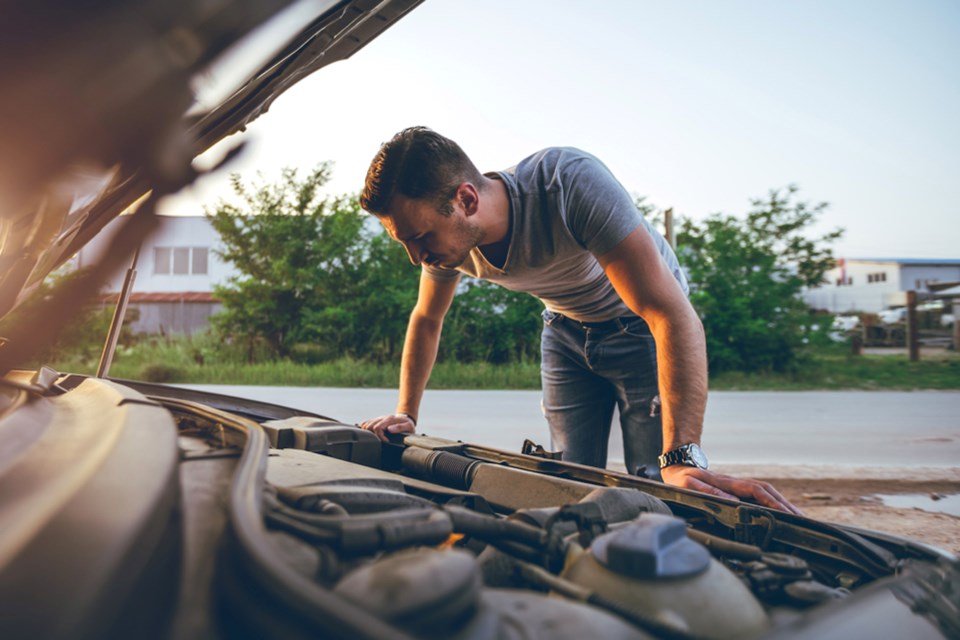Performing minor car maintenance can save you money, and isn’t as difficult as you might think. With some standard tools and a little know-how, you can begin to handle some simple routine maintenance and repairs yourself.
Today, we’ll give you directions on how to complete these jobs like a pro. From changing a tire to changing the oil, you’ll know exactly what tools you need and the steps required to get back on the road.
Tire Change
Flat tires can leave you stranded on the shoulder, but with a good spare and a couple of tools, you can be behind the wheel again in no time.
- Before lifting your car, use your tire iron or lug wrench to loosen the flat tire’s lug nuts. If you raise it before this step, the tire will spin in the air, and loosening the nuts becomes impossible.
- A floor jack is optimum, but due to its size, most vehicles have smaller jacks on board. Raise the car behind the tire you’re removing, and be sure to place the jack on the frame as not to bend any critical pieces. Once the vehicle is raised, you can finish unscrewing the lug nuts and swap out the two tires.
- When tightening the lugs after replacement, you’ll want to move in a star pattern to ensure the tire is being secured flush.
- After lowering the car back to the ground, give each lug one more twist to guarantee they’re tight.
Oil Change
Oil changes can be intimidating, but you can save tons of money and time by doing it yourself after learning the basics.
- To start, make sure your vehicle is off and hasn’t run for a while to ensure the fluids have cooled.
- You’ll need to raise your vehicle to give yourself room to work, and jack stands are a worthy investment for tasks such as this.
- Have a drain pan ready, and unscrew the drain plug. Be sure to keep a hold of the plug, or it will end up in the bottom of your oil-filled pan or bucket.
- While draining, you can replace the oil filter, too. Specific oil filter wrenches make removal easy, but some traditionalists will just use their hands. Partially unscrew and allow the oil to drain before removing and replacing it with a new filter.
Once your filter has been replaced and all old oil is drained, replace the drain cap and fill it up with new oil. Add the new oil slowly, with frequent level checks. Be sure not to overfill, and you’ll be good to go for thousands of more kilometres.
Fuse Change
One of the most uncomplicated repairs for any vehicle owner is a fuse replacement. With a fuse puller or needle-nose pliers, you can bring your interior lights, stereo system, or backup cameras back to life.
- Consult your vehicle manual to see your fuse box diagram, which will show you what each fuse powers, and where it’s located.
- If one of your systems is dead, pull the corresponding fuse and inspect it.
- If there’s a gap in the wire at the top of a dark spot, you likely have a blown fuse. Compare it with a new fuse, if there’s any doubt, and replace them as necessary. This is usually all that is needed to solve electrical problems inside your ride.
 urbazon via gettyimages.com
urbazon via gettyimages.comHeadlights
Burnt out headlights and even broken plastic don’t usually require a trip to the mechanic shop. You can find most headlight bulbs and vehicle-specific kits at auto part stores, and installation is easier than you think.
- For a headlight bulb or plastic replacement, pop your hood and look for tabs or screws on the inside of the hood behind the lights. These tabs will release the entire headlight unit from the vehicle.
- From here, you can unhook the wires and replace the whole piece, or simply remove the burnt-out bulb and replace it.
- Taillights can be trickier, but the process is the same - simply locate the light tabs in the back of the vehicle for access. In just a few minutes, you can repair your lights and stay away from the shop.
Like most things, these repairs will become second nature with just a little practice. Make sure to carry a selection of tools in your vehicle and spare parts like fuses and bulbs. With the right gear and knowledge, you can save time and money by fixing it yourself!
 This story was made possible by our Community Partners Program. Thank you Davis Chevrolet for helping to expand local news coverage in Alberta. Learn more.
This story was made possible by our Community Partners Program. Thank you Davis Chevrolet for helping to expand local news coverage in Alberta. Learn more.


